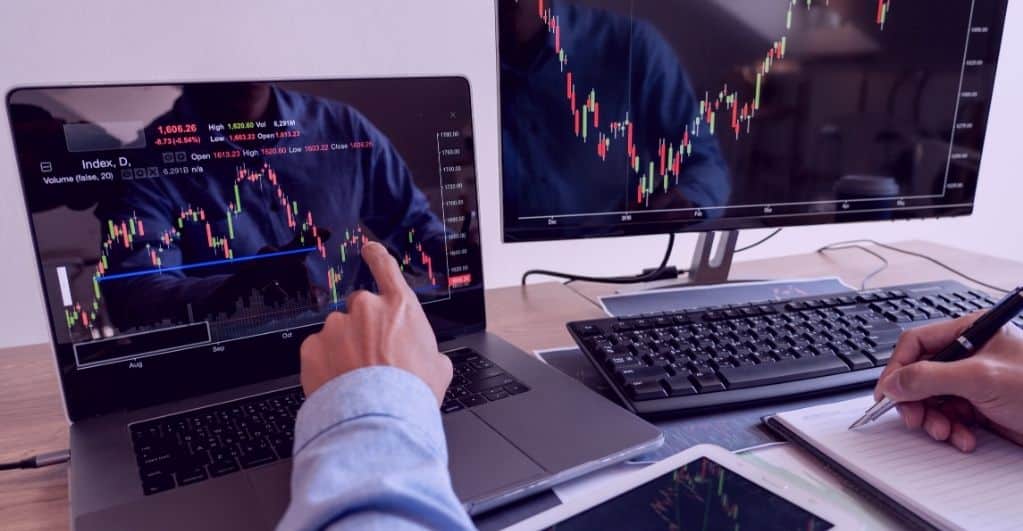Do you want to become a successful trader? You must understand your whole portfolio’s sensitivity to market volatility. It is mainly essential when trading forex as currencies with forex brokers are always priced in pairs. You cannot trade a single currency ever. Once you know the currency correlations and how these correlations change, use them to direct your portfolio exposure.
What Is Correlation?
Correlation is a measure that defines how different assets move in relation to one another. The more the correlation coefficient is, the more they are aligned closely. When it comes to the Forex market, correlation helps predict which currency pair’s price will move in tandem. A positive correlation refers to the value of two variables moving in the same directions, and a negative correlation refers to the value moving in opposite directions. If a correlation is zero, it means that the relation between those currency pairs is random.
Types of Correlation
There are three main types of correlations: positive correlation, negative correlation, and zero/ no correlation.
Positive Correlation: It refers to the relationship between two currencies or assets where both move in the same way. So, if the value of one currency increases, the other one’s value also increases. And if the value of a currency decrease, the value of another one also decreases.
Negative Correlation: It refers to the relationship between two currencies or assets where an increase in the value of one currency is linked with the decrease in another one’s value.
Zero/ No Correlation: It occurs when no relationship is there between two currencies or assets.
How Does Correlation Affect Trading?
When there is high volatility, assets and currencies generally become more correlated. International markets become highly correlated in times of instability. Traders, thus, choose to include those currency pairs that have a lower market correlation for managing their risks. Unfortunately, there are times when correlation increases among different markets and asset classes in case of high volatility.
Knowing how closely the currency pairs of your portfolio are correlated is an excellent method to measure your risk and exposure. You may think that you are diversifying the portfolio by investing money in different currency pairs, but lots of them incline to move in the opposite or same direction to each other. The correlations between currency pairs can be weak or strong and can last for days, months, or years.
Which Are the Correlation-based Strategies for Trading?
While both positive and negative asset correlations have noteworthy effects on the markets, it is essential for the traders and investors to tome their correlation-based trades appropriately. It is mainly because there are many times when these relationships break. These times can be expensive if the traders fail to understand what exactly is going on.
The correlations concepts play an essential role in technical analysis for traders looking to diversify their portfolios. In times of high uncertainty in the market, a common trading strategy is rebalancing the portfolio by replacing assets with positive correlations with other assets having negative correlations with one another.
In such cases, the price movements of assets can one another, decreasing the risk for traders. It also lowers the returns. When the market gets more stable, traders can start closing the offset positions.
What Are Correlated Assets and Asset Classes?
There are correlations between the heavily traded commodities and currency pairs in the world. The Canadian dollar, for example, is correlated with the cost of oil as Canada is a big oil exporter. On the other hand, the Japanese yen is correlated negatively to oil costs since it imports all its oil. Similarly, the New Zealand currency and Australian dollar are highly correlated to the price of oil and gold. Some more examples of correlated assets include oil prices and airline stocks, gold and stock market, and more. If you note the correlation of the assets, regularly monitor them, and time the investment windows carefully, you can make successful trades.
Conclusion
To become a successful trader, you need to understand your exposure. It is also essential to know how various currency pairs move with regards to one another. Some of them move in tandem, while others are polar opposite. Learning about correlation helps traders and investors to manage their portfolios appropriately. Irrespective of your trading strategies and whether you want to find alternative pairs for leveraging or view or diversify your position, it is vital to remember the correlations between various currency pairs. Consider their shifting trends. Apart from this, when you decide to trade in the forex market, you must choose a leading forex brokers platform, so that you can use their advantages and earn huge returns further.







